13-11-2016, 05:44 PM
The tyre bible.
So I often get asked a lot of questions about tyres weirdly. So I thought I would write a general guide for it.
There are a fair few bits of information on a tyres side wall so we we start with the easy ones.

The first one width is self explanatory, its the width of the tyre tread.
Profile is the depth of the tyre. Its a percentage of the width. So if you have a 200/50 the sidewall will be 100mm high.
Diameter again is self explanatory. Its the size of the rim that the tyre will fit in inchs.
Load is the amount of weight each tyre can carry.
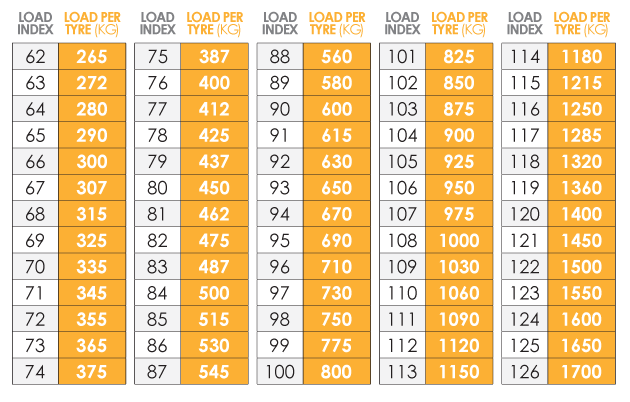
The speed rating is how fast the tyre can safely go
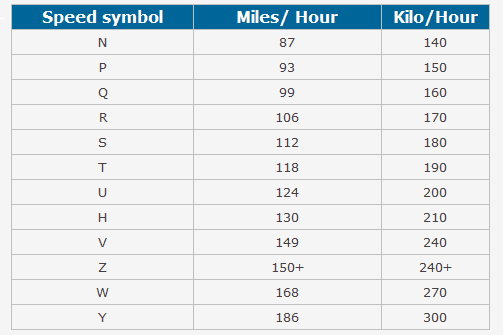
These are the basic things to do with tyres. Then we get the tyres ratings that are legally required to be supplied with all new tyres. The 3 things on the label are DB decibels. Ie how loud the tyres are. Wet grip efficiency rated from A-G and fuel efficiency rating from A-G.
You also get some tyres that are rotational and have to be facing the correct way on the car.
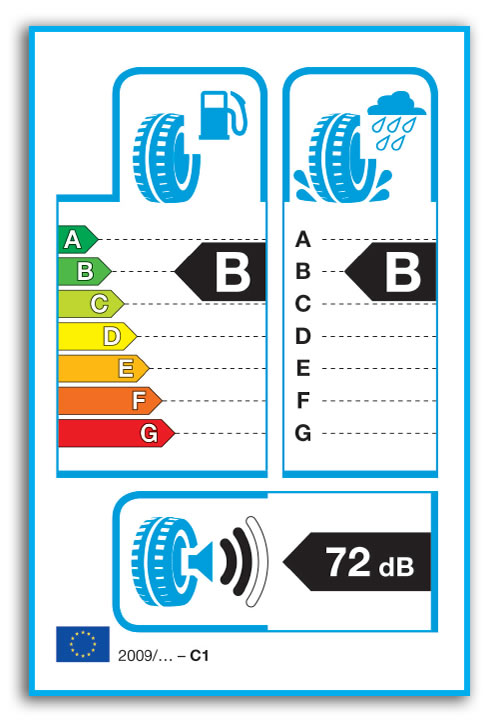
For people that buy second hand tyres. Yes they do exist, myself included have done this in the past and have even tracked on part worns. Dot markings are really handy thing to know. The next diagram should help out here. It identify dates of when they were made so you know youre not getting old hard tyres. So a tyre with a dot code of 2011 was made in the 20th week of 2011
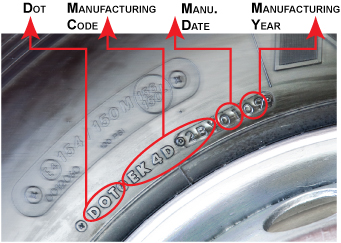
You also get wear grading which to be honest a lot of people dont know or care about. Generally speaking the higher grip a tyre has the shorter amount of time they last. Its graded from 100 which is really fast wear upwards. However I dont know everything and this is one thing thats never really botherd me. If someone would like to help me explain this one a bit better you can.
MOT STANDARDS
These can seem overly complicated bringing in crossply and radial. With our cars we would never see crossply so I am going to assume you run what everyone else in this country does which is radials.
The tyres have to be of good general condition, no lumps or bulges and no cuts so the cords of the tyre are showing. The tread depth must be 1.6 ¾ of the way across the centre part of the tyre all the way around. This means the outer edges can be bald and still pass. Though I wouldn't advise driving on them an mot is MINIMUM requirements. They also have to have the same size across an axle.
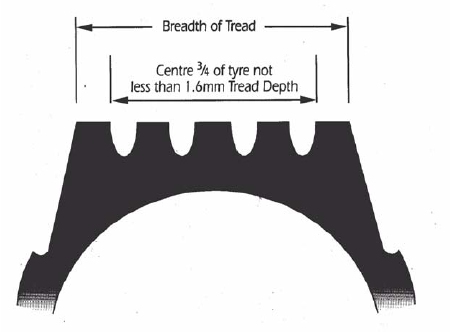
If anybody would like me to add anymore to this just add a suggestion and I can adjust correct accordingly. Ill admit im not the first to know everything.
a good website to see what all the meanings mean in an interactive way.
gives stopping distances etc dependant on tread wear dot codes meaning. loads of useful stuff honestly worth a look.
http://app.dealersalesaid.co.uk/
So I often get asked a lot of questions about tyres weirdly. So I thought I would write a general guide for it.
There are a fair few bits of information on a tyres side wall so we we start with the easy ones.
The first one width is self explanatory, its the width of the tyre tread.
Profile is the depth of the tyre. Its a percentage of the width. So if you have a 200/50 the sidewall will be 100mm high.
Diameter again is self explanatory. Its the size of the rim that the tyre will fit in inchs.
Load is the amount of weight each tyre can carry.
The speed rating is how fast the tyre can safely go
These are the basic things to do with tyres. Then we get the tyres ratings that are legally required to be supplied with all new tyres. The 3 things on the label are DB decibels. Ie how loud the tyres are. Wet grip efficiency rated from A-G and fuel efficiency rating from A-G.
You also get some tyres that are rotational and have to be facing the correct way on the car.
For people that buy second hand tyres. Yes they do exist, myself included have done this in the past and have even tracked on part worns. Dot markings are really handy thing to know. The next diagram should help out here. It identify dates of when they were made so you know youre not getting old hard tyres. So a tyre with a dot code of 2011 was made in the 20th week of 2011
You also get wear grading which to be honest a lot of people dont know or care about. Generally speaking the higher grip a tyre has the shorter amount of time they last. Its graded from 100 which is really fast wear upwards. However I dont know everything and this is one thing thats never really botherd me. If someone would like to help me explain this one a bit better you can.
MOT STANDARDS
These can seem overly complicated bringing in crossply and radial. With our cars we would never see crossply so I am going to assume you run what everyone else in this country does which is radials.
The tyres have to be of good general condition, no lumps or bulges and no cuts so the cords of the tyre are showing. The tread depth must be 1.6 ¾ of the way across the centre part of the tyre all the way around. This means the outer edges can be bald and still pass. Though I wouldn't advise driving on them an mot is MINIMUM requirements. They also have to have the same size across an axle.
If anybody would like me to add anymore to this just add a suggestion and I can adjust correct accordingly. Ill admit im not the first to know everything.
a good website to see what all the meanings mean in an interactive way.
gives stopping distances etc dependant on tread wear dot codes meaning. loads of useful stuff honestly worth a look.
http://app.dealersalesaid.co.uk/
On a break from 306oc for personal reasons. If anyone needs or wants me most of you have my number and or facebook messenger
Thanks for the good times guys n gals. I might be back. Who knows.
Thanks for the good times guys n gals. I might be back. Who knows.




